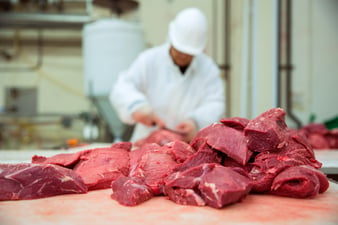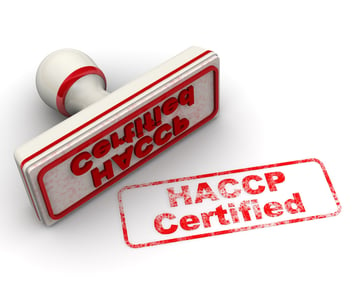 Food contamination is a constant threat in the food industry. The mere thought of having to deal with a product recall and the PR backlash that comes with it has been known to keep food manufacturers up at night.
Food contamination is a constant threat in the food industry. The mere thought of having to deal with a product recall and the PR backlash that comes with it has been known to keep food manufacturers up at night.
As a result, many manufacturers of packaged food products have made significant investments into their quality control, such as adding more QC personnel or installing specialized metal detection and x-ray product scanning equipment to their production line. Many food makers follow HACCP (Hazard Analysis and Critical Control Points) guidelines to help optimize their quality control processes and comply with food safety requirements.
The goal of these investments? To spot contaminants that make their way into food products before said products make it to shipping.
With this in mind, what is one of the most common sources of contaminants in almost any food production process? Pieces of the very tools used to process food throughout the production and packaging process.
This is where detectable components come into play. Why use detectable components? Here are a few reasons:
1: Standard Components/Materials Might Not Be Detectable to Your Inspection Equipment
Whether your production process uses metal detection equipment, x-ray inspection equipment, or both, it is important that the components you use in your process can be picked up by your inspection equipment.
Many modern materials incorporate low-density plastics to reduce weight and overall cost. However, these polymer products might be nearly invisible to detection equipment. Because of this, small shavings from these components that break off can easily make it into food products undetected.
By using specially-made detectable components, you can vastly improve your chances of detecting stray contaminants from your processing equipment such as parts shavings or broken pieces of processing equipment.
2: It Can Help You Establish HACCP Compliance
 A major component of the HACCP system is performing a thorough hazard analysis, wherein you identify your biggest risks for product contamination and do whatever you can to eliminate those risks.
A major component of the HACCP system is performing a thorough hazard analysis, wherein you identify your biggest risks for product contamination and do whatever you can to eliminate those risks.
Using detectable components in place of non-detectable ones can be a major step in controlling your contamination risk, which helps your company prove that it has taken steps to reduce the risk of product contamination under HACCP guidelines.
3: To Reduce Customer Complaints
Nobody likes having to run PR damage control because a piece of sharp plastic or some other contaminant went undetected and made it into a product package.
Trust is very hard to earn in the food industry, but so easy to lose from just a small handful of incidents. Because of this, it’s important to avoid those incidents in the first place.
Using detectable components to ensure that the biggest contamination risks are found helps to prevent contaminated goods from reaching the market. This, in turn, reduces the occurrence of customer complaints, saving your company time and money on recalls and preserving the public’s trust in your brand.
4: There are Many Different Types of Components Available
One of the major objections that process managers might have to using detectable components is that the right components simply aren’t available for their process.
However, there are many different components available in a variety of colors and dimensions to meet your production requirements. Here’s a short list of what’s available:
- Cable Clamps, Tiewraps
- Gaskets
- Hair Nets
- Bandaids
- ID and Traceability Tags
- Knives
- O-Rings
- Plastic, Metal, and Touch-Screen Pens
- Rubber Bands or Fragments
- Scrapers
Just to name a few of the detectable components and tools that can be made for your production line. In fact, virtually any components can be manufactured to be made detectable to your x-ray or metal detection equipment.
Find out more about how detectable components enhance food product safety by checking out the Detectable Components page.




